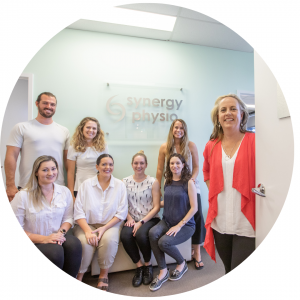Let’s explore the common symptoms with osteoarthritis and essential steps that you can take to help you manage your pain and improve your function.
Symptoms
Osteoarthritis is normally described as a progressive stiffness in joints, worse after periods of rest such as first thing in the morning or after prolonged periods of sitting.
- Perhaps you have noticed stiffness in your hip or difficulty putting on shoes or socks or getting in an out of a car.
- Perhaps you have noticed that your knee is stiff or swollen and you have a family history of knee arthritis.
These are all common symptoms that patients will describe when they are developing the onset of osteoarthritis.
What is Osteo-arthritis?
We are often asked what is osteoarthritis is it simply bone on bone or joint wear and tear?
Osteoarthritis is actually a disease process that can affect not only the joint surface but also the surrounding ligaments and muscles, the joint cartilage and joint lubrication (synovial fluid). The most common joints affected are the knees and hips.
There is no known cause for osteoarthritis however there are several factors that can contribute to symptoms. These factors can be divided into modifiable and non-modifiable risk factors for making your osteo arthritis worse.
Modifiable risk factors include.
- Being too sedentary. Lack of movement in the joints can contribute to a loss of health in the joint cartilage. Healthy joint cartilage needs regular movement! This helps lubricate the joint with synovial fluid (a bit like oiling the joint!). Many patients will describe a worsening of symptoms first thing in the morning or after a prolonged periods of rest. Which means movement is medicine and being too sedentary can make osteoarthritis feel worse!
- Being overweight. Every kilo counts when you are weight-bearing through your knees and hips and we know that this is a modifiable risk factor that can easily be addressed with dietary changes.
- Loss of strength. Losing strength in key muscles that support your joints (such as the quadriceps and gluteals) will make your joints feel worse and daily activities become more difficult.
Non-modifiable risk factors can include
- Genetics. Unfortunately if you’ve had a family history of OA you are at greater risk.
- Past injuries. Sometimes previous injuries can affect the joint and also affect your strength around the joint which means this is a risk factor that can contribute to worsening symptoms.
My x-rays are terrible should I have surgery?
Research has shown that there are many people with terrible looking x-rays who are managing reasonably well with function and pain. On the other end of the scale we also have patients who have only mild signs of OA on the x-rays, however are in terrible pain!
What the research has concluded is that it’s not all about your X-rays and your X-rays only form one piece in the puzzle.
Research has concluded that if you can maintain the strength around your joint, your ability to function in daily life significantly improves! Which means that even if you have moderate to severe signs of arthritis on your x-ray, if you maintain your strength and reduce the risk factors such as being overweight this can be a huge helping hand in managing your symptoms.
What can I do to help myself?
We like to describe managing osteoarthritis as three lines of defence.
The first line of defence in managing your symptoms is to maintain a healthy weight range, build on your strength around your joint, and maintain healthy activity levels.
A simple program of strengthening exercises for 6 to 12 weeks around the hip and knee can have drastic improvements in your ability to function in daily life and your pain levels. Many patients can often delay or avoid surgery if they are diligent with their strengthening program for 12 weeks. The good news is, if a surgery becomes an option to explore, if you have built strength prior to your surgery then your post-operative recovery operatively can be smoother! Building strength is a win-win situation for osteoarthritis.
Like to know what strength you should be doing? Make an appointment for a one-on-one assessment with our physiotherapy and exercise physiology team by contacting us
Keeping active and your joints moving is also essential for managing osteoarthritis. Activities can include hydrotherapy, cycling and walking. Regular small doses of movement can help! Like to know more about how hydrotherapy can help you with your joint mobility? Find out more about hydrotherapy here.
The second line of defence.
If your symptoms continue to be problematic despite 6 to 12 weeks of strengthening we can then move to the second line of defence. This includes talking to your GP or pharmacist about appropriate medication. It might also include medical input such as joint injections.
Third line of defence.
The third line of defence is joint replacement surgery. The decision to have joint replacement surgery is one made between yourself and your orthopaedic specialist. It is best to ensure that you have built up your strength for your surgery so you’re post-operative recovery is smooth.
Like to learn more about arthritis? You might like our podcast episode here!
 Our team love to help YOU with your health. We offer one on one consultations, tailored small group classes, hydrotherapy and post-operative care!
Our team love to help YOU with your health. We offer one on one consultations, tailored small group classes, hydrotherapy and post-operative care!
Would you like simply to speak to one of our expert physiotherapy team members to find out if we can help you?
Contact us on 07 5448 3369 or simply book online!

Leave A Comment